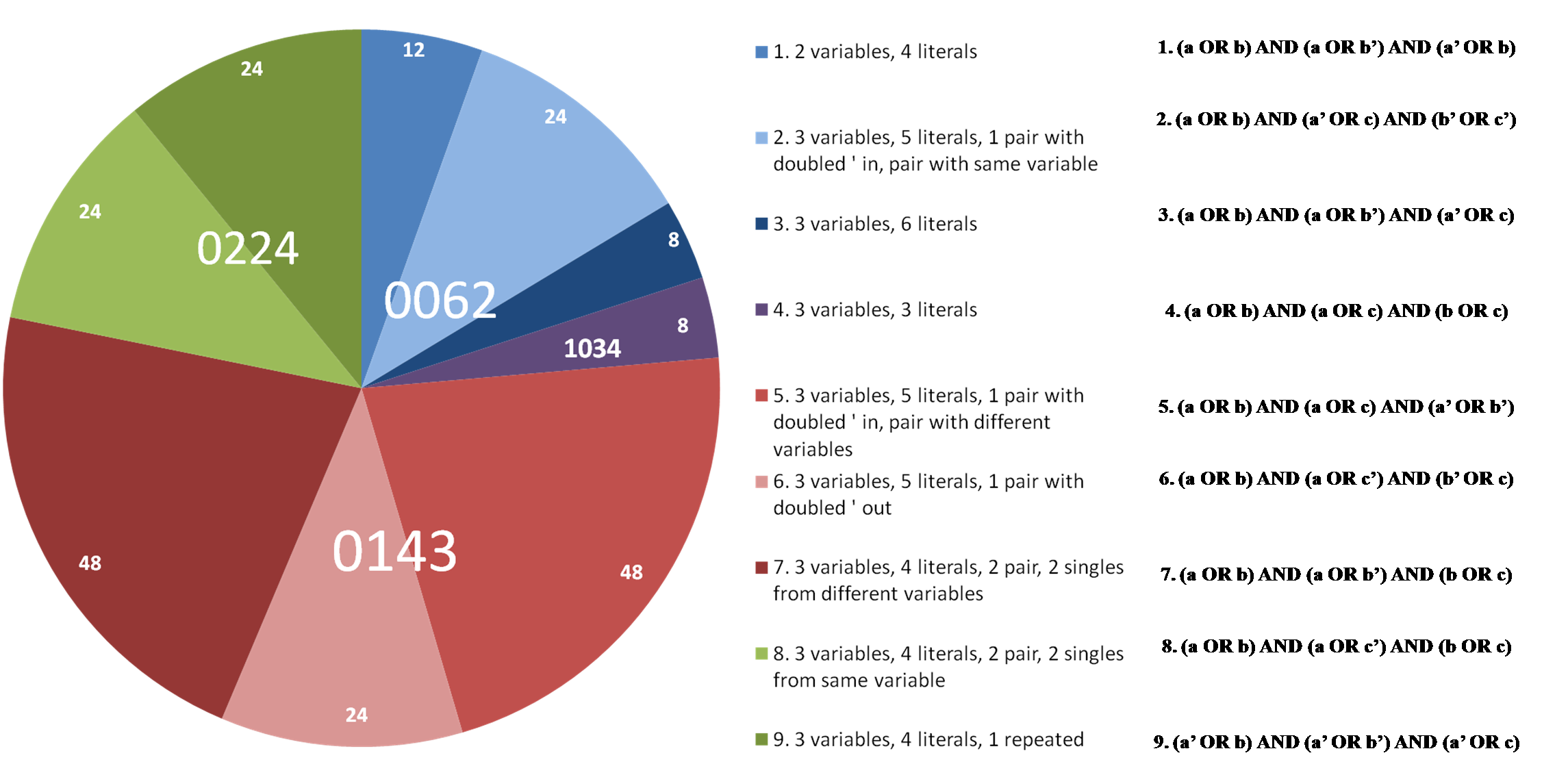Team:MoWestern Davidson/project mathmodel
From 2009.igem.org
(→Rough and Fine distribution) |
(→Rough and Fine distribution) |
||
| Line 8: | Line 8: | ||
| - | To classify SAT problems, we began looking at the | + | To classify SAT problems, we began looking at the rough distribution of each problem, meaning how many inputs satisfied a certain number of clauses in a problem. There are 3C2 * 2^2 = 12 clauses for 3 variables 2-SAT. There are 12C3 = 220 problems with 3 clauses. The table below gives the number of clauses satisfied by each input for a few select 2-SAT problems. |
| - | |||
| Line 16: | Line 15: | ||
[[Image:Table2.png|none|750px|]] | [[Image:Table2.png|none|750px|]] | ||
| + | |||
| + | |||
| + | |||
| + | The rough distribution for the red problem is '''0143'''. That distribution means 0 inputs satisfied 0 clauses, 1 input satisfied 1 clause, 4 inputs satisfied 2 clauses and 3 inputs satisfied all 3 clauses. | ||
Revision as of 21:09, 27 July 2009

Lego Models
B2 Bomber
Rough and Fine distribution
To classify SAT problems, we began looking at the rough distribution of each problem, meaning how many inputs satisfied a certain number of clauses in a problem. There are 3C2 * 2^2 = 12 clauses for 3 variables 2-SAT. There are 12C3 = 220 problems with 3 clauses. The table below gives the number of clauses satisfied by each input for a few select 2-SAT problems.
The rough distribution for the red problem is 0143. That distribution means 0 inputs satisfied 0 clauses, 1 input satisfied 1 clause, 4 inputs satisfied 2 clauses and 3 inputs satisfied all 3 clauses.
Fine distributions look more deeply at how each clause was satisfied. If an input satisfies one or two literals in a clause, that clause is satisfied singly or doubly respectively. For example, the input abc’ satisfies the clause (a OR b’) singly because only a from the input is in the clause. However, the same input abc’ satisfies the clause (b OR c’) doubly because both b and c’ are in the input and clause.
The fine distribution for the red problem from the table above is 0011212100. This distribution means that 0 inputs satisfied 0 clauses, 0 inputs satisfied 1 clause singly, 1 input satisfied 1 clause doubly, 1 input satisfied 2 clauses with 2 singles, 2 inputs satisfied 2 clauses with 1 single and 1 double, 1 input satisfied 2 clauses with 2 doubles, 2 inputs satisfied 3 clauses with 3 singles, 1 input satisfied 3 clauses with 2 singles and 1 double, 0 inputs satisfied 3 clauses with 1 single and 2 doubles, and 0 inputs satisfied 3 clauses with 3 doubles.
 "
"


